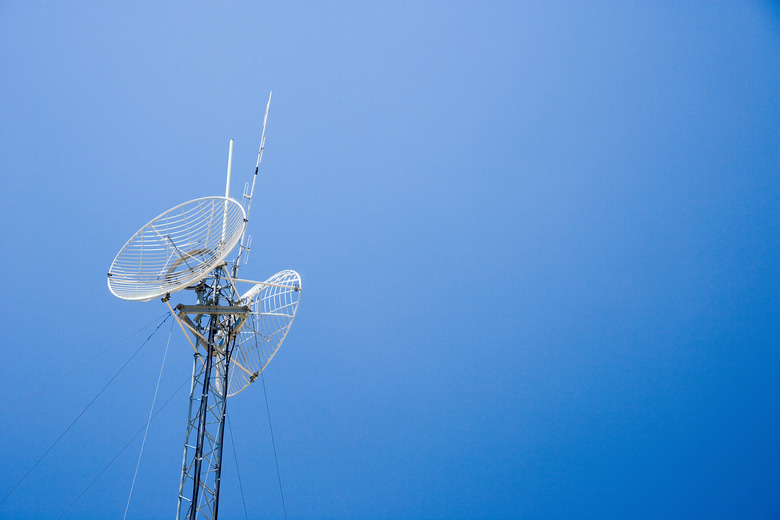Antenna Tower Types
There are three primary tower types: mast, lattice and pole systems, that are typically oriented to the construction of today's cell and microwave antennas. These systems are some of the largest man-made structures on the planet and today's communications, broadcast and power systems could not effectively operate without them.
Mast Towers
Depending on the particular industry the words "tower" and "mast" can be used interchangeably. These antenna are typically square-based, vertical structures used to elevate communications equipment or radiate an electronic signal in order to produce what is referred to as clear "line of sight" between one or more receiving/transmitting sites. These structures can be tall, for example the former Warsaw radio mast was 2,120.67 feet tall, until it collapsed in 1991 due to an engineering maintenance error. The advantage of this configuration is cost, since these structures require minimal real estate to construct in urban areas.
Lattice Towers
Lattice towers are similar to vertical mast structures, however, these systems are more typically triangular, or of an extended-box configuration. In the latter case, this produces a wider base than its top, and the entire structure is constructed by creating a series of horizontal ladders, or internal triangular structures, that secure the tower's three, or four base legs. In concert with masts, these systems can be quite high, with the current Guangzhou TV and Sightseeing Tower in Guangzhou China being the tallest tower structure in the world at 2001 feet tall.
Pole Towers
Pole tower configurations became more fashionable, once alternative construction materials began to exhibit greater strength and flexibility without failing. With the advent of urban cell and commercial microwave systems in the early '90s, developers wanted a more efficient way to construct and operate medium-height elevation systems, and they hit on the idea of the pole configuration. Today these free-standing towers are typically fabricated from concrete or metal, and able to "lift" various medium-weight components as high as 100 feet, without additional support such as wires.
Cite This Article
MLA
Carlton, Rick. "Antenna Tower Types" sciencing.com, https://www.sciencing.com/antenna-tower-types-5863723/. 24 April 2017.
APA
Carlton, Rick. (2017, April 24). Antenna Tower Types. sciencing.com. Retrieved from https://www.sciencing.com/antenna-tower-types-5863723/
Chicago
Carlton, Rick. Antenna Tower Types last modified March 24, 2022. https://www.sciencing.com/antenna-tower-types-5863723/
